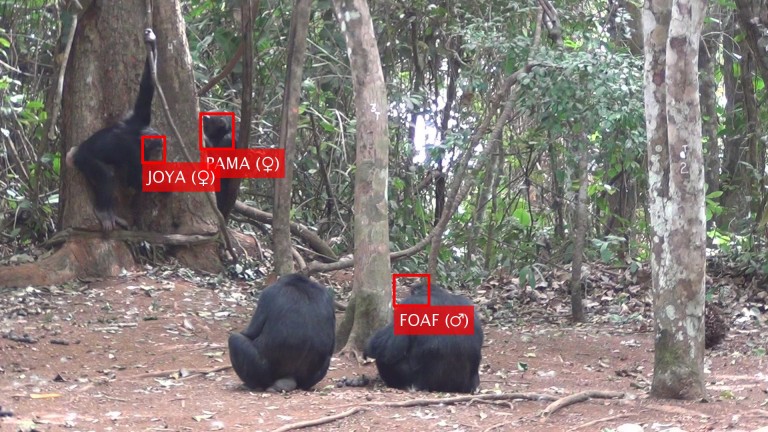A new deep-learning algorithm trained to recognize the sex and identity of wild chimps could help scientists better understand animal behavior.
The news: Face recognition has developed a bad rap of late for the ways in which it could be abused to infringe on civil liberties. But outside the human realm, researchers at Oxford have discovered a new, rather fitting purpose for the technology: to aid them in monitoring the behaviors and interactions of chimpanzees. A paper describing their study was published in Science Advances today.
What they did: Using roughly 50 hours of footage taken over 14 years, the scientists extracted 10 million face images of 23 chimps and fed them into a deep neural network. The resulting model was able to identify individuals with up to 93% accuracy and classify their sex correctly up to 96% of the time. In a comparison test, the model also performed twice as well as expert human labelers given nearly an hour to complete the task, and four times better than novices given nearly two hours. The model, in contrast, took a fraction of a second. (The few times it failed, it most often mistook a chimpanzee’s bum for a face.)
The researchers then used the model to analyze the social interactions of a population of chimps. The model revealed that the mother and infants spent the most time together, a finding that correctly aligns with understood patterns of behavior.
Other animal trackers: This isn’t the first time face recognition has been used to track animals. ChimpFace, a similar tool, is actively being used to fight illegal chimp trafficking, and other studies have sought to track lemurs, baboons, and other endangered primate species. The researchers in the latest work say that their algorithm improves upon predecessors by minimizing the amount of pre-processing required on raw footage. While previous algorithms had trouble handling lighting variations and poor image quality, theirs performs better in those conditions because it was trained on a more diverse data set.
Why it matters: Animal researchers often rely on video footage to track the behaviors of the populations they study over time. But sorting through the vast amounts of data is tedious and time consuming, and manual labeling can be inaccurate. The model demonstrates a promising new method for accelerating research in animal behavior. It could also be used to improve existing efforts for tracking endangered and trafficked species.
To have more stories like this delivered directly to your inbox, sign up for our Webby-nominated AI newsletter The Algorithm. It's free.

